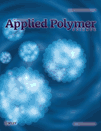Similarity and grouping of perlite and zeolite abrasive fillers: A replacement test
Abstract
Inverse gas chromatography was used to estimate surface activity expressed by the dispersive component of the surface free energy, γ , as well as parameters KA and KD describing surface ability to act as electron acceptor and donor, respectively. These parameters characterize the ability of the surface to specific interactions. The method was also applied to describe the magnitude of filler-phenolic resin interaction by Flory-Huggins parameter, χ′23. Granulation, surface area and porosity were also determined. The minimum number of parameters required to complete characterization of filler properties has been selected by principal component analysis. The usefulness of the selection for the abrasive industry has been proven. Moreover, the similarities and deviations from “an average” filler was determined by chemometric methods. Principal component analysis (PCA) and a novel procedure based on sum of ranking differences (SRD) were successfully applied for selection of the best fillers, and of advantageous parameters for characterization of the fillers. Similar and diverse fillers have been chosen based on clustering pattern by PCA and SRD. © 2012 Wiley Periodicals, Inc. J. Appl. Polym. Sci., 2013
, as well as parameters KA and KD describing surface ability to act as electron acceptor and donor, respectively. These parameters characterize the ability of the surface to specific interactions. The method was also applied to describe the magnitude of filler-phenolic resin interaction by Flory-Huggins parameter, χ′23. Granulation, surface area and porosity were also determined. The minimum number of parameters required to complete characterization of filler properties has been selected by principal component analysis. The usefulness of the selection for the abrasive industry has been proven. Moreover, the similarities and deviations from “an average” filler was determined by chemometric methods. Principal component analysis (PCA) and a novel procedure based on sum of ranking differences (SRD) were successfully applied for selection of the best fillers, and of advantageous parameters for characterization of the fillers. Similar and diverse fillers have been chosen based on clustering pattern by PCA and SRD. © 2012 Wiley Periodicals, Inc. J. Appl. Polym. Sci., 2013




